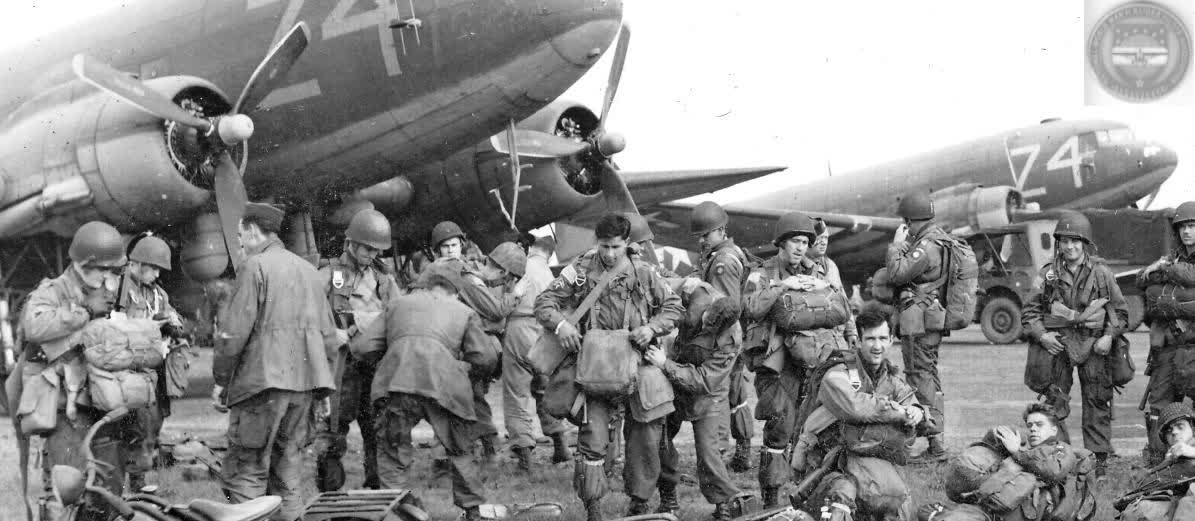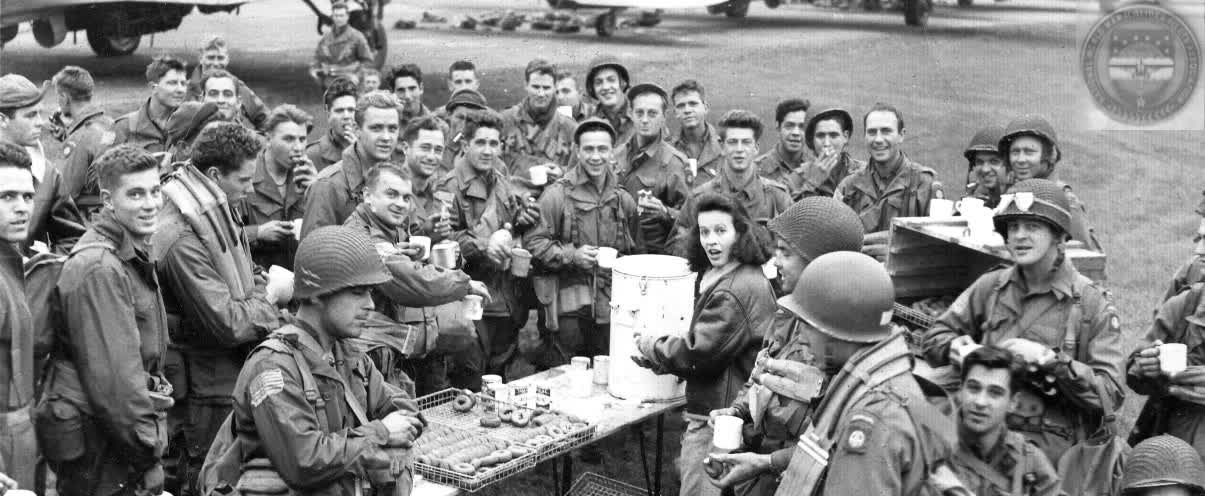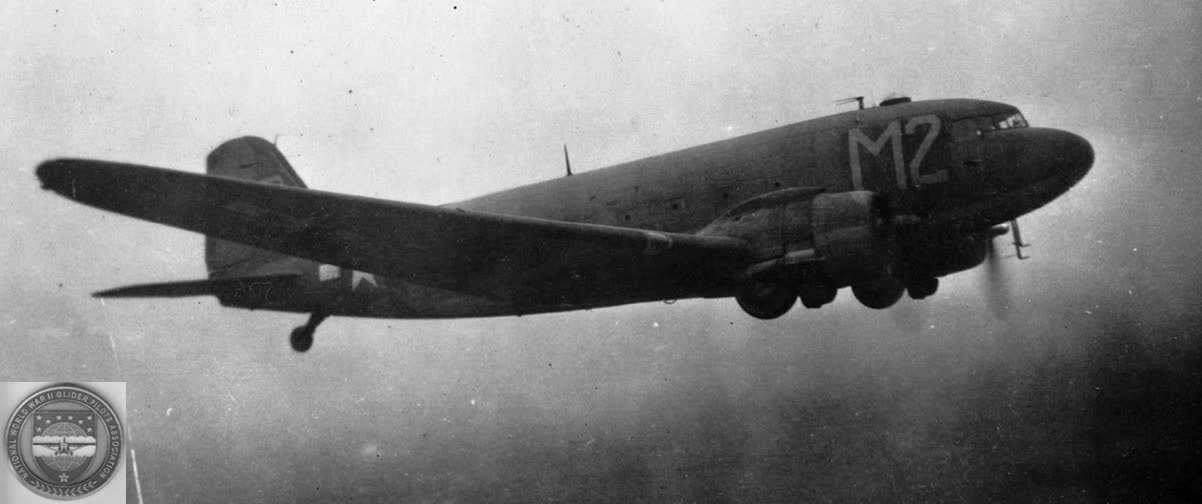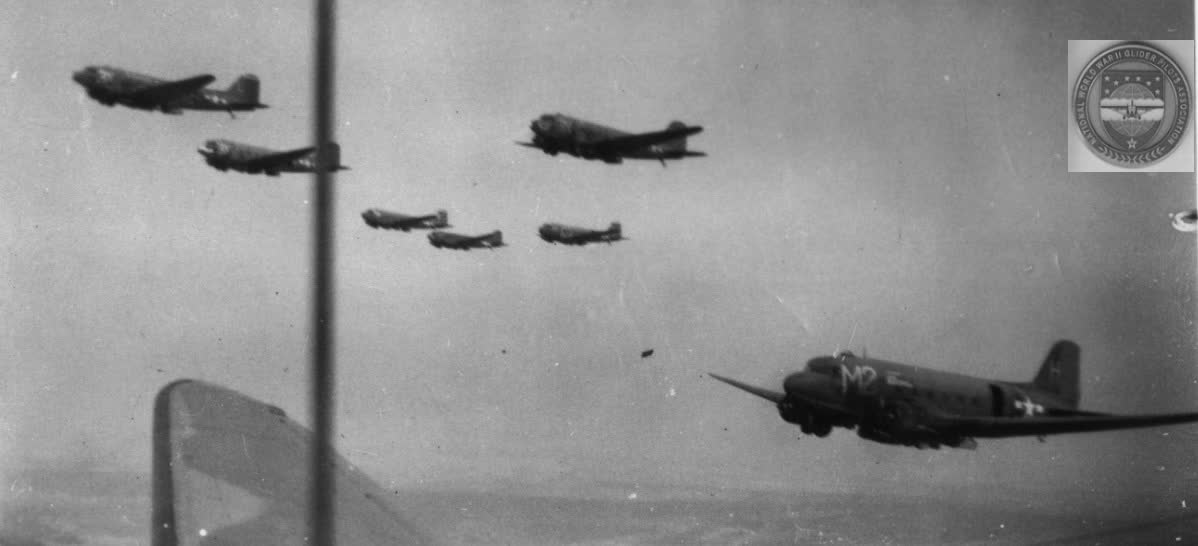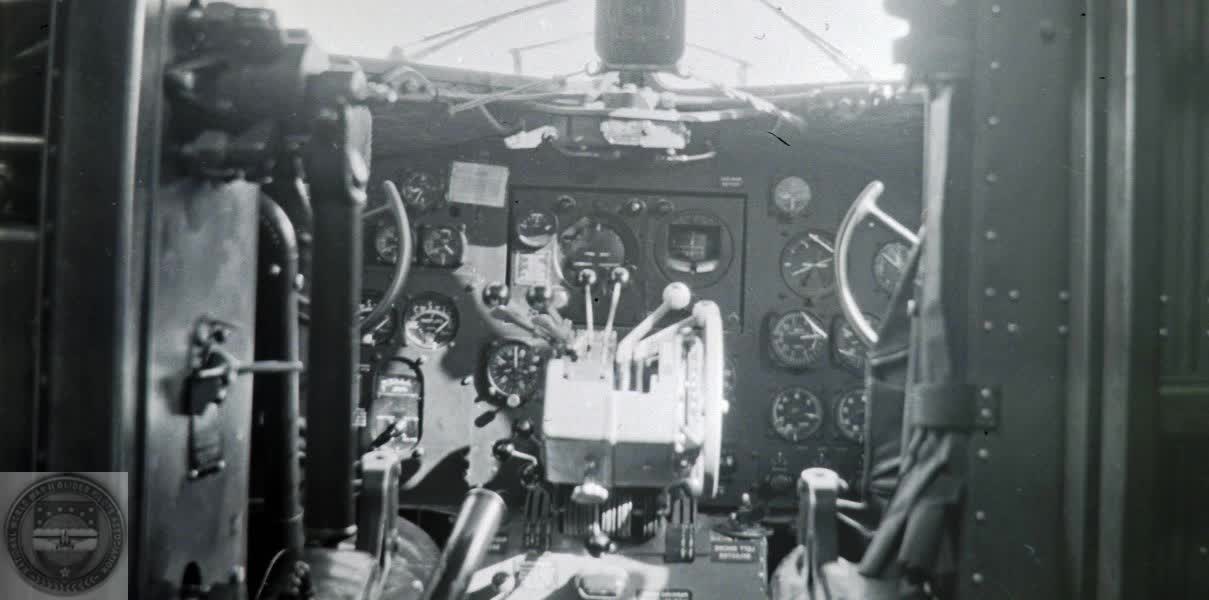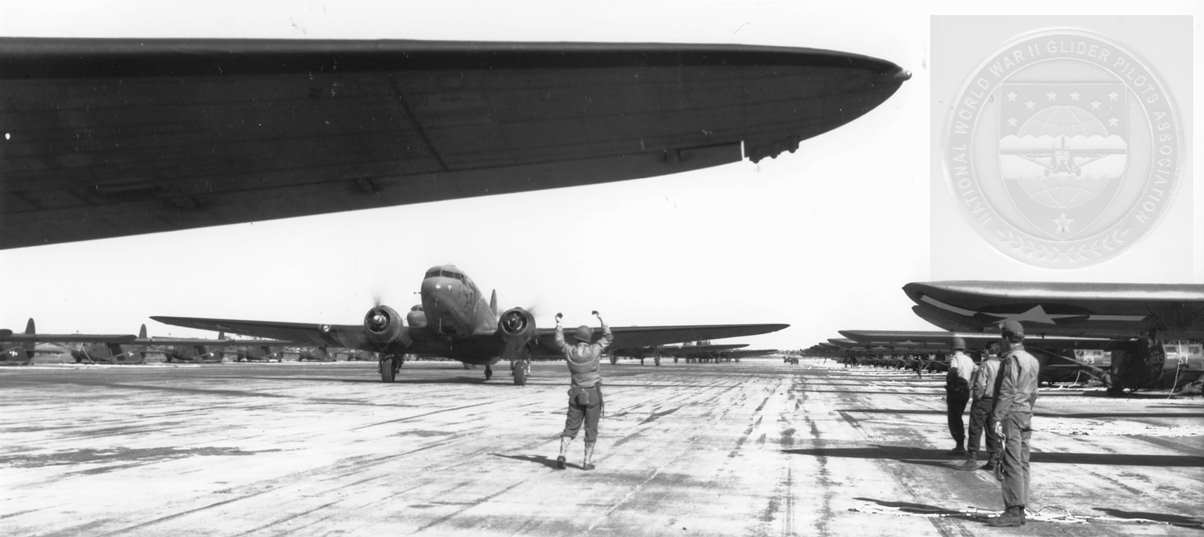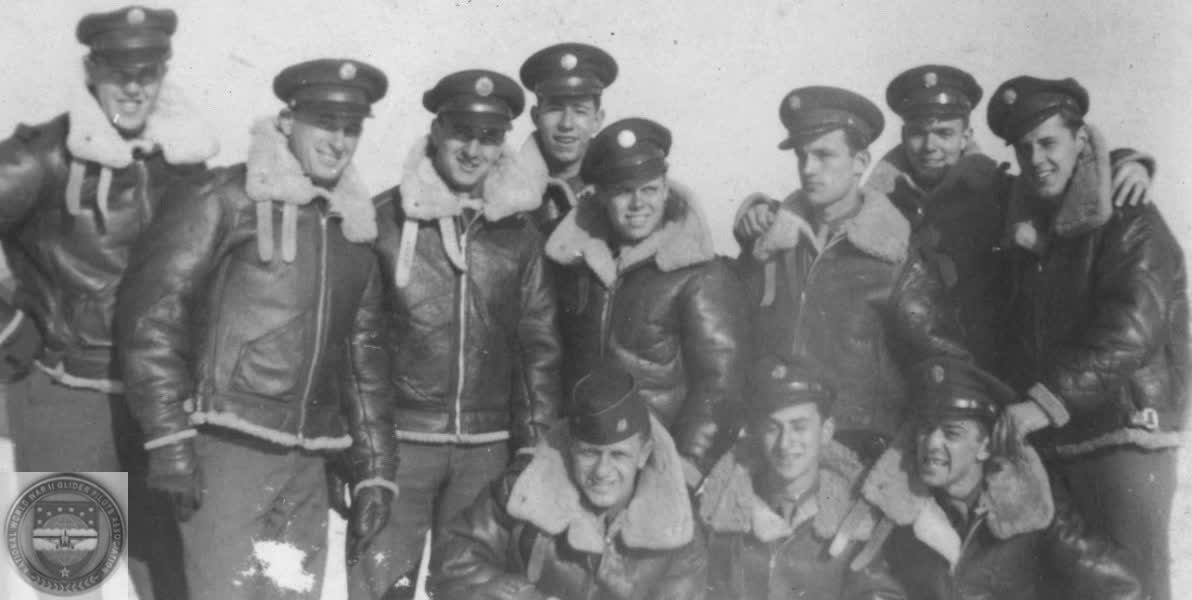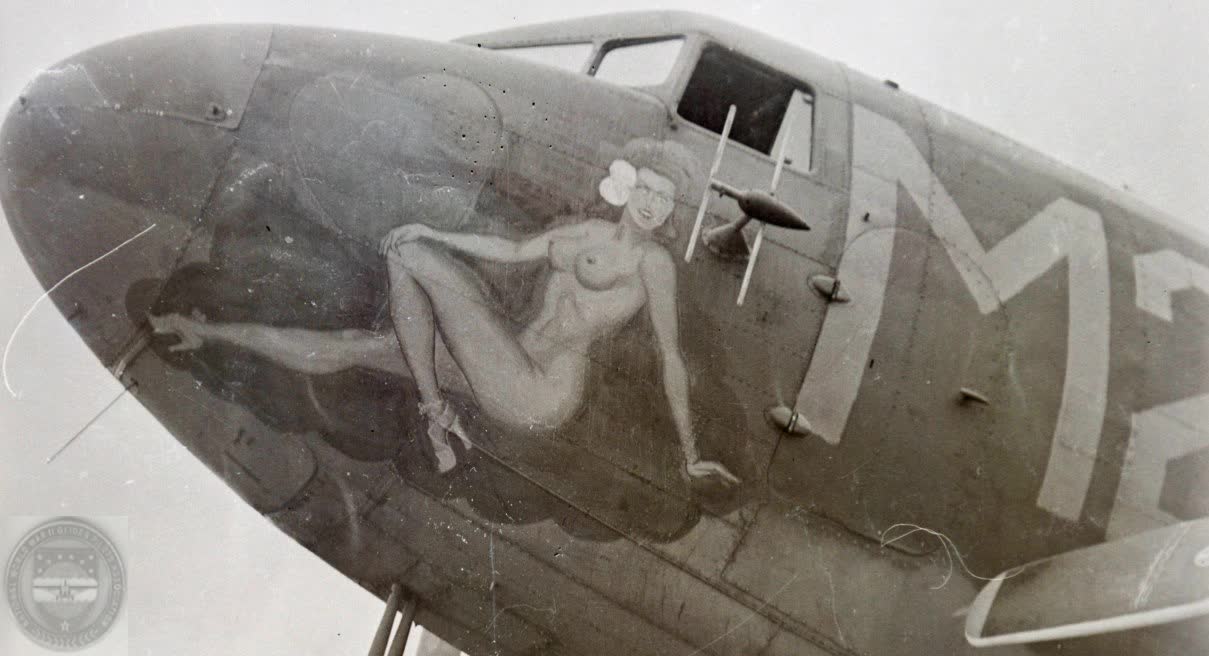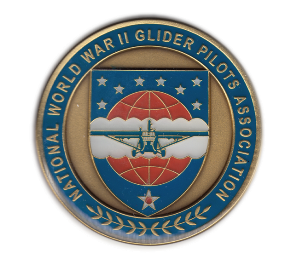IX Troop Carrier Command
First published on the Air Mobility Command Website by
George “Pete” Buckley
The IX Troop Carrier Command was constituted on the 11th of October 1943, and activated on the 16th of October 1943 in England, where it was assigned to the 9th Air Force.
It was comprised of the 50th, 52nd, and 53rd Troop Carrier Wings. Its first commanding officer was BG Benjamin F. Giles who served from October 1943 to February 1944.
He was succeeded by MG Paul L. Williams who served from February 1944 to March 1946.
The original cadre came from Headquarters 1st Troop Carrier Command (six officers only) and the 315th Troop Carrier Group. Its first temporary station was at USAAF #489 at
Cottesmore, England, and on October I, 1943 it was joined by the 434th TC Group. At this time both the 315th and the 434th were assigned to the 50th TC Wing. Twelve airfields
were assigned to the IX TC Command with each field to have forty gliders and tow planes. The fields were; Fulbeck, Langer, Bottesford, Wakerley, Balderton, North Witham,
Barkston Heath, Cottesmore, North Luffenham, Saltby, Folkingham, and Woolfox Lodge.
In November 1943, the 435th TC Group and Welford Air Base were assigned to the 50th TC Wing, and IX TC Command Headquarters were moved to Grantham. Ramsbury, Aldermaston,
and Greenham Cormmons also became available as landing areas for tactical training with the 101st Airborne Division.
In February 1944 the IX TC Command Pathfinder Group (Provisional) was formed at Cottes more under the command of Lt Col Joel E Crouch. Also in February, the 440th and 439th TC Groups
were assigned to the 50th Wing.
In the ETO, the Logistic and Support units that backed up the IX TC Command were:
U.S. Army Service Command
9th A/B Aviation Engineer Btn.
9th Air Force Service Command
8th Air Force Service Command
Air Transport Operation Room
Troop Carrier Command Service
2nd Quartermaster Mobile Btn.
490th Quartermaster Depot Co.
Without these major support units and their auxiliary units, IX Troop Carrier Command and Airborne Services would not have been able to fulfill their assigned tasks.
In 1944, IX Troop Carrier Command became an important component of the First Allied Airborne Army, under the direct jurisdiction of Lt. General Lewis Brereton.
Few people at that time (and even today) are aware of the crucial role that Troop Carrier Forces played in WW II. Troop Carrier crews and glider pilots often flew sorties in their
unarmed planes and gliders deep into enemy territory, under 1,000 feet, to deliver men and equipment to targets that were
usually defended by enemy troops. This was accomplished
through heavy flak and small arms fire, with standing orders not to take evasive action. Glider Pilots, after landing,
fought with the Airborne troops to clear the enemy from landing
and drop zones Theirs was a dual job pilots in the air, infantry on the ground.
The combined efforts of Troop Carrier forces in Europe and in the Pacific contributed greatly to the eventual
collapse of the Axis powers in WW II. Some of these TC Groups are
still flying actively today as Military Airlift Wings.
At a meeting between Generals Arnold, Spatz, Bradley, and Major General Paul Williams in April of 194[5],
General Bradley told General Williams that his armies could not have maintained
their rapid advance across France without the supplies laid down by Troop Carrier Command.
|
OUR TOW SHIPS
U.S. Air Fields in Europe
U.S. Air Fields in UK
SQUADRON CODES
C-47 TRIBUTE
C-46 VARSITY CATASTROPHE
POWER GLIDER PILOTS
PASS IN REVIEW
TOW KNOW HOW
Single Tow
Double Tow
Marshalling
Tow Rope Angle Indicator
GLIDER SNATCHING
Glider Snatches
Double Snatch
Night Snatch
Tow rope Release Indicator
Briefing of Tow rope release area for Southern France
Secret British Glider mission in the Balkins

National Archives/NWWIIGPA collection 305th Troop Carrier Squadron/442nd TC Group
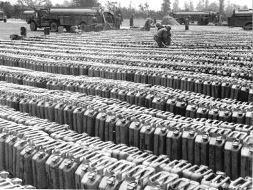
National Archives/NWWIIGPA collection
9TH Air Force soldiers are transferring gasoline from delivery trucks into gas cans at an advanced air base somewhere in France.
Many of these cans will be flown to airstrips closer to the front lines for fighter bombers. This photo was taken sometime after June 6th and before Oct. 27th 1944.
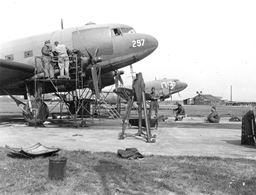
National Archives/NWWIIGPA collection
Douglas C-47's being repaired at a U.S. airdrome on the continent. EUROPE. [A plane belonging to or having belonged to the 61st sqd. of the 314th TCG can be seen in the background with its squadron code, Q9.]
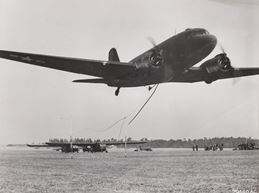
National Archives/NWWIIGPA collection
Another method of glider pickup is accomplished by a Douglas C-47 tow plane in flight.
|

 National Archives/NWWIIGPA collection
National Archives/NWWIIGPA collection National Archives/NWWIIGPA collection
National Archives/NWWIIGPA collection

